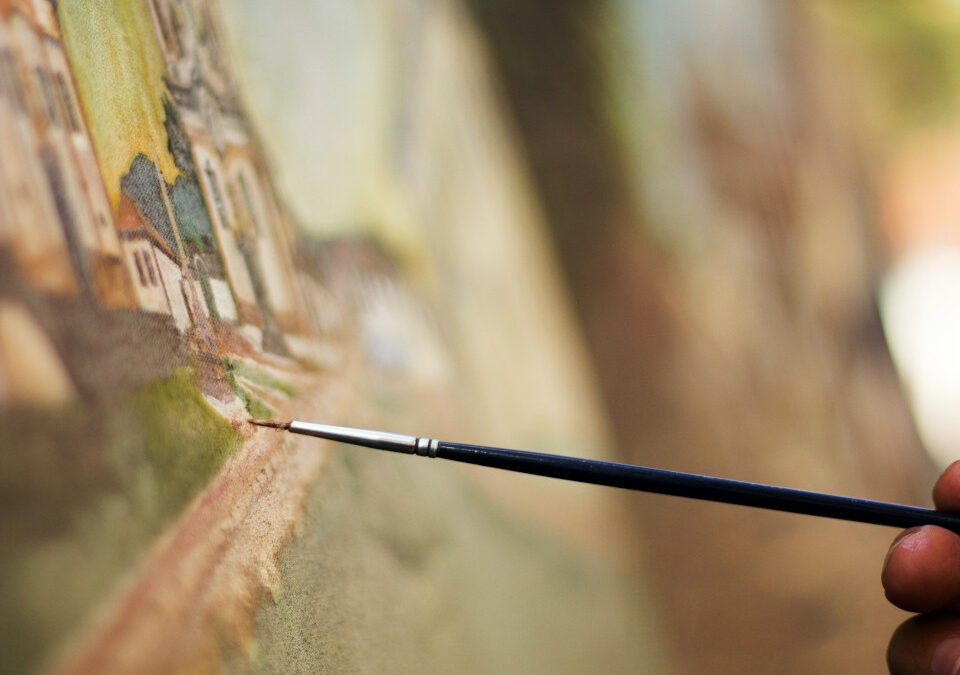Oil paint is an amazing and versatile medium. It can be applied in a thick buttery fashion or thinned down to a watery consistency. This versatility opens the door to several different painting techniques.
My personal preference is to begin my oil paintings by first sketching out the composition using acrylic paint or water-soluble oil paints. The popular approach to oil painting is to thin the paint with turpentine to apply your initial layers. Turpentine is quite toxic, and I prefer not to work with it. Acrylic or water-soluble oil paints can be thinned down with plain old water and are more pleasant to work, in my opinion.
You can also begin your oil painting by first drawing out your composition. There are a few drawing mediums that work nicely with oil paints. My two favorites are vine charcoal and water-soluble pencils. I prefer vine charcoal because it doesn’t smudge like other charcoals, and it can be erased easier. Water-soluble pencils are wonderful because they can be applied like ordinary colored pencils and can also be dampened with a brush allowing you to spread out the color.
If you are the impatient type, you may want to try your hand at the Alla Prima oil painting technique. The Alla Prima method is when you complete the painting in one sitting rather than paint in layers and wait for the paint to dry. Although I usually prefer to work out my paintings in layers, I occasionally enjoy this exciting and spontaneous approach to oil painting.
If you are the careful, patient type of painter, you may be interested in working with glazes. Glazing has lost popularity these days, partly because of the time needed to complete such a painting and its difficulty. But the results are something truly unique to any other type of painting technique. The composition is first painted with opaque monochrome underpainting, usually in shades of gray. After this initial underpainting is thoroughly dry, thin layers of transparent oil glazes are applied. Colors are not mixed directly but added in separate layers to get the desired color.
If you are the adventurous type, put the brushes aside and try a set of painting or palette knives. You can achieve some interesting results with knives that aren’t possible with brushes. The oil paint can be spread on thickly and scraped off with ease. What I enjoy most about using knives is the tendency to not focus on the small details. I am forced to paint in a more relaxed fashion that creates an impressionist style of painting. Get yourself a set of painting knives and try to complete an entire painting with just the knives. It’s challenging at first if you are used to brushes, but it’s an enjoyable exercise.
Perhaps you would like your painting to have more body and texture. You could try the impasto technique and apply your paint in thick heavy strokes, leaving evidence of all those wonderfully artistic brush strokes. Take a look at a Van Gogh painting, and you will see this technique in action.
It’s no wonder why oil painting is such a popular choice for painters. There is so much to discover in oil painting. You will never get bored trying out all the wonderful tools, mediums, and techniques.


